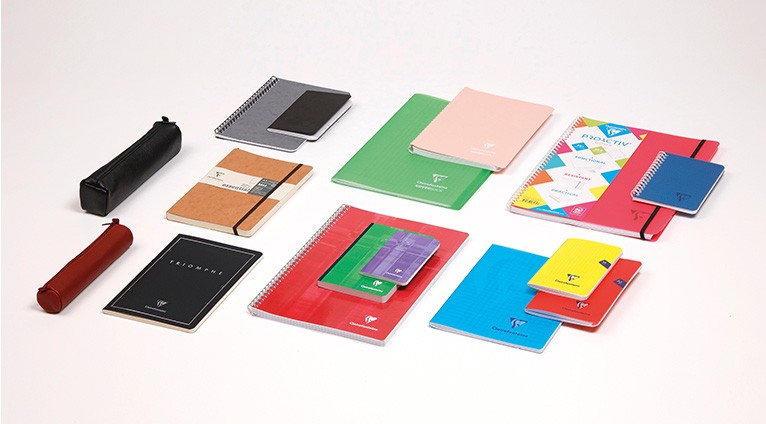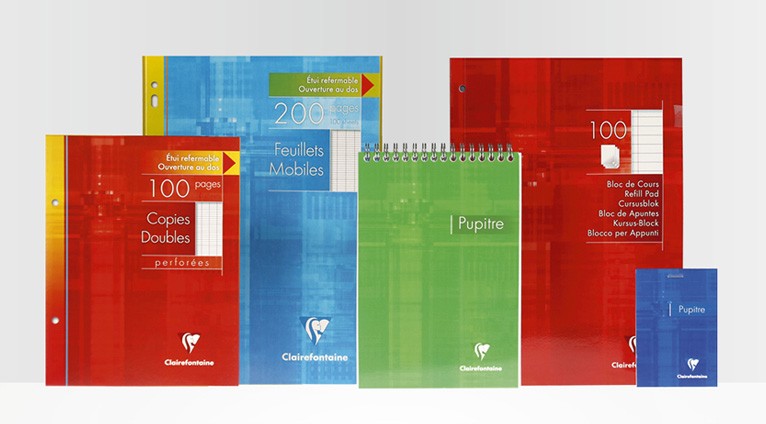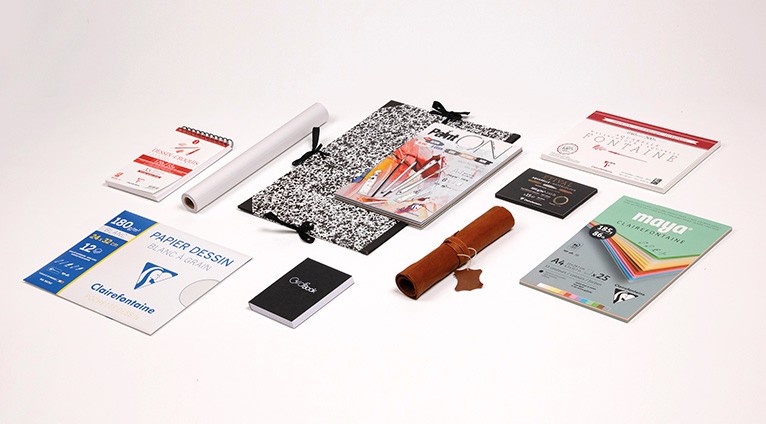Clairefontaine is committed
We firmly believe that the web should be available and accessible to everyone, and we are committed to providing a website accessible to the widest audience, regardless of circumstances and abilities.
Digital accessibility means that people with disabilities can use the web. Specifically, they can perceive, understand, navigate, and interact with the web, and they can contribute to the web. Digital accessibility also benefits others, especially older individuals whose abilities change with age. Web accessibility includes all disabilities that affect access, whether visual, cognitive, or motor. An accessible website allows, for example:
- Navigation with a screen reader and/or a braille display (especially used by blind and visually impaired individuals);
- Customizing the display of the site according to one's needs (enlargement of characters, color adjustments, etc.);
- Navigating without using the mouse (using the keyboard only, via a touch screen, voice, or any other adapted device).
For this, the site must comply with the standards in force during its creation and updates.
Navigation assistance by AccessWidget
AccessWidget improves site accessibility for users with a wide range of disabilities (blind and visually impaired, people with cognitive disorders, motor disorders, epilepsy, etc.), in accordance with WCAG 2.2 guidelines, European and French regulations (RGAA 4.1). To achieve this, AccessiWay combines digital accessibility consulting services with an artificial intelligence-based application that runs in the background to constantly optimize its level of accessibility. Notable improvements include:
- Navigation with a screen reader and keyboard: Implementation of the WAI-ARIA (Accessible Rich Internet Applications) attribute technique, as well as various behavioral modifications, to ensure that blind users visiting the site with screen readers can read, understand, and enjoy all the site's functions.
- Keyboard navigation optimization: The background process also adjusts the HTML code of the website and adds various behaviors using JavaScript code to make the website usable with the keyboard. It is possible to navigate the site using the Tab and Shift+Tab keys, use dropdown lists with arrow keys, close them with Esc, trigger buttons and links using the Enter key.
- Activatable profiles:
- Security profile for epileptic individuals: This profile allows epileptic individuals to use the website safely by eliminating the risk of epileptic seizures resulting from flashing animations and risky color combinations.
- Profile for visually impaired individuals: This profile adapts the website to be accessible to the majority of visual impairments such as deteriorating vision, tunnel vision, cataracts, glaucoma, etc.
- Profile tailored to cognitive disorders: This profile provides various assistance functions to help users with cognitive disabilities such as autism, dyslexia, stroke, and others, focus more easily on essential elements.
- Profile tailored to hyperactive individuals: This profile significantly reduces distractions and noise to help individuals with ADHD and neurological developmental disorders navigate, read, and focus on essential elements more easily.
- Profile tailored to blind individuals (screen reader): This profile adapts the website to be compatible with screen readers such as JAWS, NVDA, VoiceOver, and TalkBack.
- Profile tailored to motor disabilities (keyboard navigation): This profile allows individuals with reduced mobility to operate the website using the keyboard and the Tab, Shift + Tab, and Enter keys. Users can also use shortcuts such as "M" (menus), "H" (headers), "F" (forms), "B" (buttons), and "G" (graphics) to access specific elements.
- Additional interface, design, and readability adjustments:
- Font adjustments: Users can increase and decrease its size, change its family (type), adjust spacing, alignment, line height, etc.
- Color adjustments: Users can select different color contrast profiles such as light, dark, inverted, and monochrome. Additionally, users can interchange color schemes for titles, texts, and backgrounds, with over 7 different coloration options.
- Animations: Epileptic users can stop all ongoing animations by clicking a button. Interface-controlled animations include videos, GIFs, and flashing CSS transitions.
- Content highlighting: Users can choose to highlight important elements such as links and titles. They can also choose to highlight only targeted or hovered elements.
- Audio mute: Users with hearing aids may suffer from headaches or other issues due to automatic audio playback. This option allows users to instantly mute the sound of the entire website.
- Cognitive disorders: AccessiWay uses a search engine linked to Wikipedia and Wiktionary, enabling individuals with cognitive disorders to decipher the meaning of sentences, initials, slang, etc.
- Additional functions: AccessiWay offers users the ability to modify the cursor's color and size, use a printing mode, activate a virtual keyboard, and many other functions.
Feedback and contact
If you are unable to access content or a service, you can contact the Clairefontaine representative at https://www.clairefontaine.com/gb/contact-us to be directed to an accessible alternative or obtain the content in another form.
● Contact Clairefontaine at https://www.clairefontaine.com/gb/contact-us
Recourse avenues
This procedure is to be used in the following case. You have reported to the website's representative an accessibility defect that prevents you from accessing content or a portal service, and you have not received a satisfactory response.
● Write a message to the Defender of Rights https://formulaire.defenseurdesdroits.fr/
● Contact the Defender of Rights delegate in your region https://www.defenseurdesdroits.fr/saisir/delegues
● Send a letter by post (free, no need for a stamp)
Défenseur des droits
Libre Réponse 71120
75342 Paris CEDEX 07









